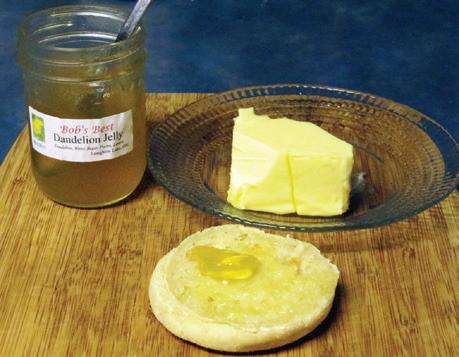
6 minute read
Member recipe: No life like it
No life like it
BY BOB STEWART, LONGBOW LAKE
Advertisement
Canada’s military catch slogan used for many years, ‘There’s no life like it’, captures the essence of living at the lake in Northwestern Ontario.
For myself and my wife Brenda, it has been a lifestyle we’ve thoroughly enjoyed for more than half a century. For over two decades we had use of my family’s cottage at Longbow Lake, and since 1992 have been permanent residents there.
Brenda came by a love of living near the water early.
Her parents lived at West Hawk Lake and owned rental cabins, a gas bar, and an ice cream stand, so she grew up with a lake at her doorstep.
I came to love the lake life in my teens when my parents bought their cottage on Longbow Lake in 1970, converting it a decade later into their year-round home, and only selling to us when they began spending winters in Arizona and summers on the road in their RV. They didn’t want the worries of maintaining a house and yard while they were away.
There really is no life like having the lake as your front yard; the solitude of a clear, crisp winter’s day, a quiet summer evening sitting in the screen porch, and a boat ride always only a few steps from the front door—fishing included if you are so inclined, neighbours far enough away to not need curtains on the windows yet close enough to call for help if needed (and always handy for a get-together), and birds and wildlife outside the window. The many pluses of rural lake life far outweigh any minuses.
One of those pluses is harvesting the bounty of the land; another is the opportunity for nature photography.
Vegetables from the garden are familiar to many, but for us, nature’s harvest also includes wild fruits and flowers—most of which find their way into jams and jellies.

An evening cruise is one of the many joys of living at the lake.
After collecting five or six five-gallon pails of fruit, we were faced with the challenge of what to do with it all. Making jelly seemed as good a solution as any. A quick check in the ever-handy Joy of Cooking we’d picked up at a yard sale shortly after we got married provided the instructions.
However, as we quickly found, turning 20-30 gallons of wild plums into jelly results in a lot of jelly—dozens of jars in fact. Selling the excess at a few church sales that fall eventually developed into a regular booth at the local farmers market selling my jelly and Brenda’s photographs of birds, butterflies, and other wildlife drawn to our bird feeders and deck planters. These hobbies provide plenty of enjoyment for both of us.
Wild plums, crabapples, Saskatoon berries, chokecherries, dandelion petals, nasturtium and peony blossoms, even new growth pine needle tips—some harvested from our own property, others gifted by friends and neighbours —are just some of the things that have made their way into the jelly pot.
Here are two of our favourite recipes: our classic wild plum jelly and Brenda’s personal favourite, dandelion jelly.
Crystal clear wild plum jelly
INGREDIENTS
• Wild plums (at least 8 to 10 cups required per batch, including a cup of green fruit for the extra natural pectin)
• 1 package of pectin, 49 grams (can be either standard powdered pectin crystals, "light" crystals which require less sugar, or liquid pectin)
• 4 to 5 cups of ordinary white sugar
• 12 sealer jars, 250 ml size (you won't need them all, but having them sterilized and ready is a good idea)
• Several large pots
Making the jelly:
1. Rinse the fruit and place in a large stockpot; add water until just barely covered and bring to a boil. As soon as it boils, pour off the water and rinse fruit in a colander. Refill the pot with fruit and fresh water; bring to a boil again. Cook at a slow boil until the fruit becomes soft and the skins begin to split (test by mashing a plum or two with a wooden spoon).
2. Use a jelly bag or make your own strainer by lining a colander or sieve with several layers of cheesecloth (or a sterilized linen or smooth cotton tea towel) and place over a large pot.
3. Pour the softened fruit into the bag or colander and let the juice drain into the pot (never mash down the fruit or squeeze the bag, it will result in cloudy juice). Draining takes about 30 to 45 minutes.
4. It takes six cups of juice to make a single, standard pectin package fruit jelly recipe. Starting with more fruit than called for doesn't hurt as extra juice can be frozen for future batches, up to several years, or until you have enough juice for another full batch.
5. Follow the standard jelly recipe on the package, especially for the sugar amounts and boiling times. A bit of over-measuring on the sugar won't hurt, but too little and your jelly won't set properly. The same with the boiling instructions. A bit of extra time doesn't hurt, but too little and your jelly won't set. Hard boil means just what it implies, a really rolling, bubbling and foaming brew. Skimming is also important. The more foam and surface skin that can be removed, the clearer your jelly will be. The jelly is ready to go in the jars when a small amount cooled for 30-45 seconds on a kitchen spoon slides off as a single mass.
6. Process the sealed jars in a boiling water bath for 10 minutes, then remove and cool. Jelly will last in a storage cupboard for a year or more.
7. Save the foam and surface skim; it makes a great glaze when cooking meats and although it won't win prizes for appearance, is just as tasty as the jelly.
Dandelion jelly

Dandelion jelly on a toasted and buttered muffin brings a taste of spring to your morning.
INGREDIENTS
• 5 cups of dandelion juice (pinch or cut the petals from the dandelion heads keeping out as much greenery as possible—three to four cups of loose petals will yield about five cups of juice) •
1 package of No-Sugar powdered pectin (the No-Sugar variety is needed as floral petals have no natural pectin)
• 3 cups of white sugar
• 2 tbsp lemon juice
• Sealer jars, 250 ml size
• Several large pots
Making the jelly:
1. Put the petals in a large pot with about six cups of water, bring to boil and simmer for about 20 minutes. Use a jelly bag or make your own strainer by lining a colander or sieve with several layers of cheesecloth (or a sterilized linen or smooth cotton tea towel) and place over a large pot. Let the juice drain into the pot (never mash down the fruit or squeeze the bag, it will result in cloudy juice). Draining takes about 30 to 45 minutes.
2. It takes five (5) cups of juice to make a single, standard pectin package recipe. If needed add some water to the strained juice to make up the required volume.
3. Add the lemon juice (or the juice of one fresh lemon) to the liquid and the powdered pectin – stir to mix and bring to boil, then add the sugar and continue boiling until set. This usually takes just five minutes or so. The lemon juice lowers the pH of the mixture to a level required for jelly setting.
4. As with the wild plum jelly, a bit of over-measuring on the sugar won't hurt. The same with the boiling time. Skim off any foam that develops for clear jelly and when it reaches the gel stage, poor into sterilized jars and seal.
5. Process the sealed jars in a boiling water bath for 10 minutes, then remove and cool. Jelly will last in a cupboard for a year or more.

Dandelion petals can be harvested by pulling the flower heads from the stems and either cutting the petals from the heads or plucking them with your fingers.










